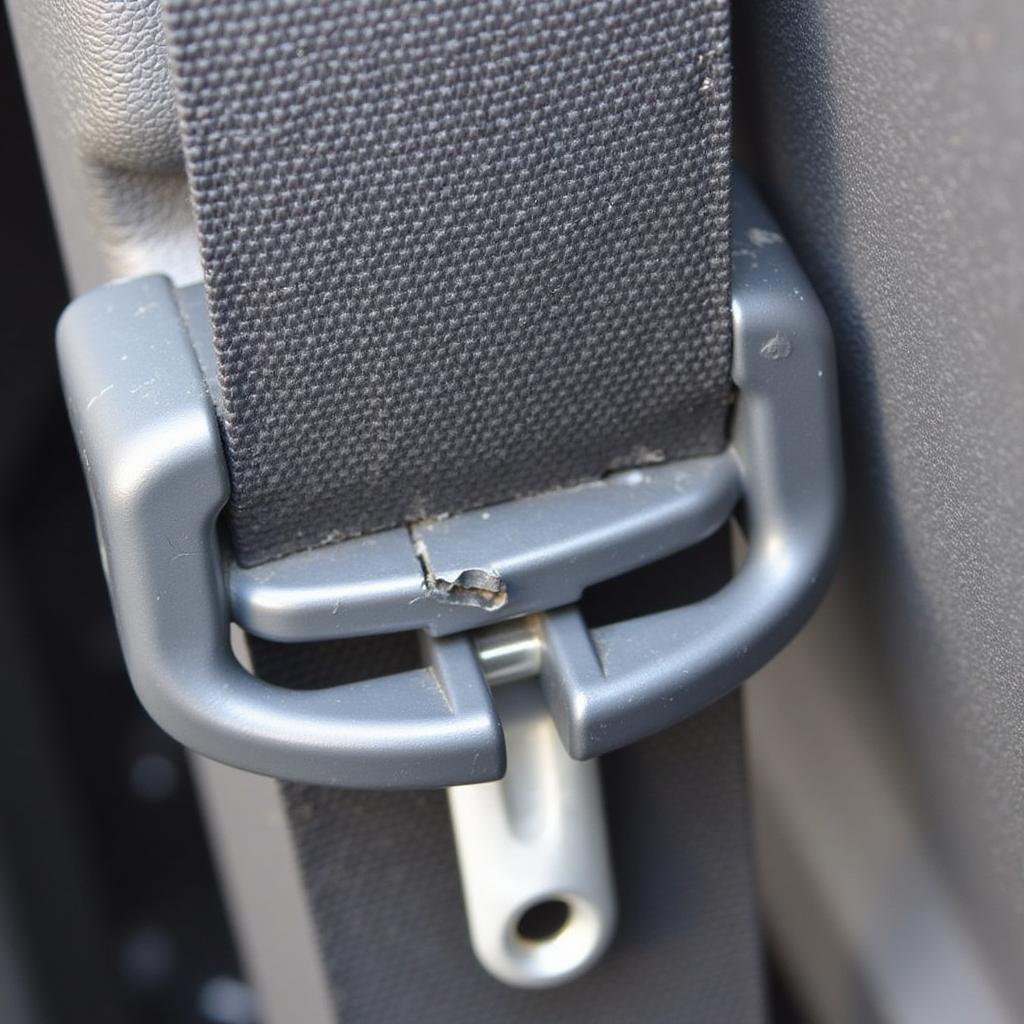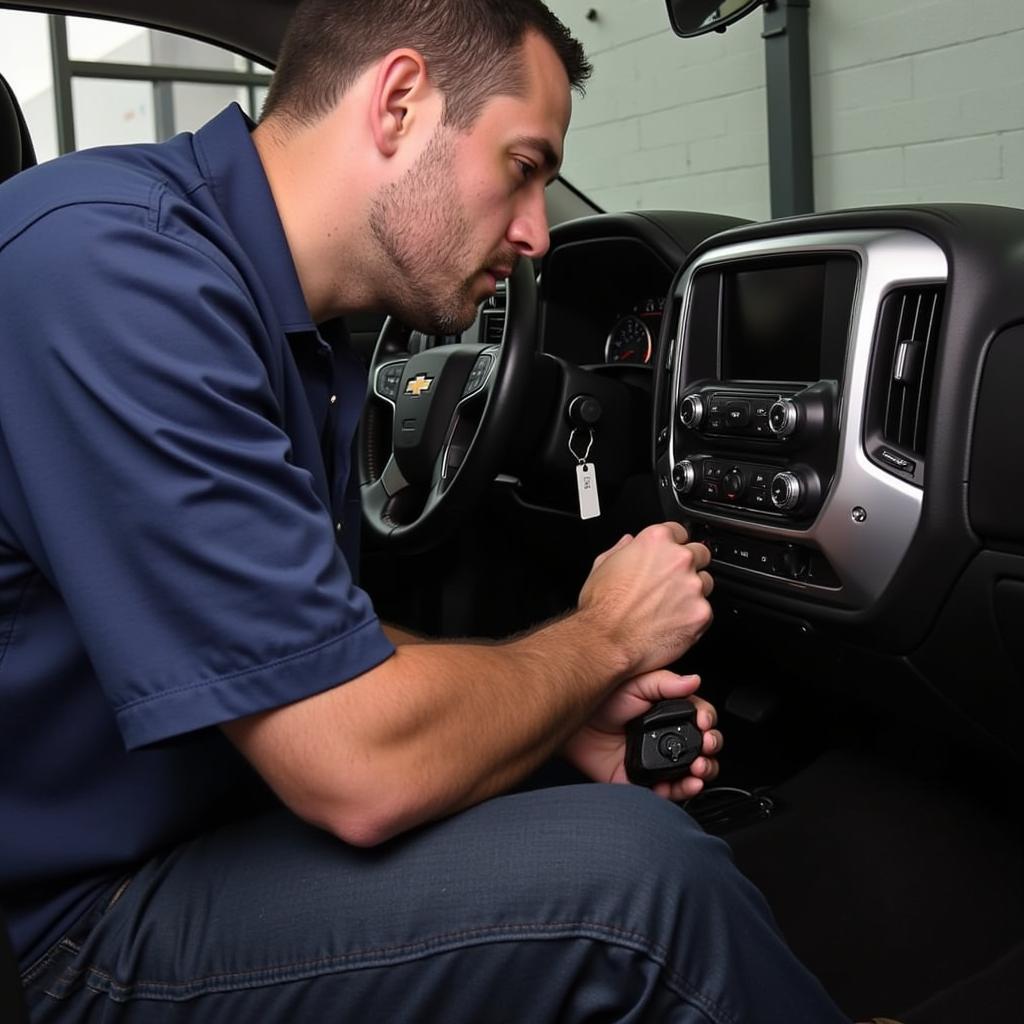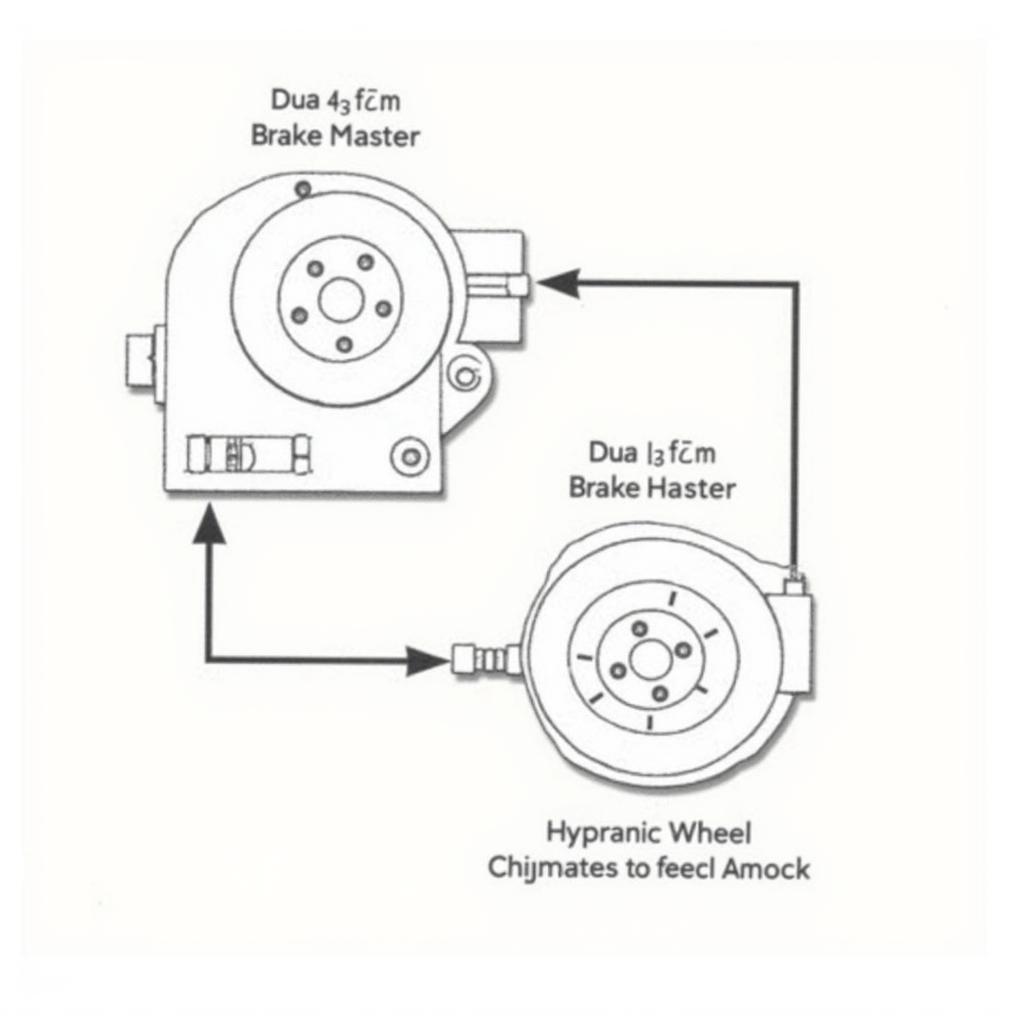If you’re driving a 2014 Silverado and noticing the seat belt warning chime isn’t working, you’re not alone. This is a common issue reported by many owners of this model year. While a malfunctioning chime might seem like a minor inconvenience, it can have safety implications.
This comprehensive guide dives into the possible reasons behind your 2014 Silverado seat belt warning not playing and provides practical solutions to get your chime back in working order.
Understanding the Seat Belt Warning System
Your Silverado’s seat belt warning system is designed to provide both audible and visual cues to encourage seat belt use. When the ignition is on and the driver’s or passenger’s seat belt isn’t fastened, the system initiates:
- Audible Chime: A series of beeps emanating from the vehicle’s speakers.
- Visual Warning: A seat belt icon illumination and/or a message displayed on the driver information center (DIC).
While the visual warnings might still function properly, a malfunctioning chime can often be traced back to a few common culprits.
Common Causes and Solutions for a Silent Seat Belt Warning
1. Faulty Seat Belt Buckle/Latch Assembly
The most common culprit behind a silent chime is a faulty seat belt buckle or latch assembly. This assembly houses a sensor that detects whether the belt is fastened. Over time, this sensor can wear out, get damaged, or become clogged with dirt and debris, leading to a failure in triggering the chime.
Solution: Inspect the buckle and latch assembly for any visible damage, dirt, or debris. If found, carefully clean the assembly. If cleaning doesn’t resolve the issue, the buckle/latch assembly likely needs replacement.
 Faulty Seat Belt Buckle
Faulty Seat Belt Buckle
2. Software Glitch
Like any computer system, your Silverado’s onboard computer system, also known as the Body Control Module (BCM), can experience software glitches. These glitches can disrupt the communication between the seat belt sensor and the chime, resulting in a silent warning.
Solution: A simple fix for a software glitch is often a system reset. This can usually be done by disconnecting the battery’s negative terminal for a few minutes and then reconnecting it. However, if the issue persists, a more advanced diagnostic scan using a professional-grade OBD-II scanner might be necessary to pinpoint and rectify the glitch.
 OBD-II Scanner Diagnosis
OBD-II Scanner Diagnosis
3. Damaged Wiring Harness
The wiring harness connecting the seat belt buckle assembly to the BCM can become damaged due to wear and tear, rodent damage, or improper installation of aftermarket accessories. A damaged wire or loose connection can interrupt the signal flow, rendering the chime inoperative.
Solution: This requires a visual inspection of the wiring harness for any signs of damage, such as cuts, fraying, or burns. If damage is found, repairing or replacing the affected section of the harness is necessary.
4. Malfunctioning Driver Information Center (DIC)
While less common, a malfunctioning DIC can also be the root cause. The DIC is responsible for both the visual and audible warnings. If the DIC itself is faulty, it might not be able to execute the chime command even if it’s receiving the signal from the seat belt sensor.
Solution: Troubleshooting the DIC can be complex and often requires professional diagnosis. It may involve checking the DIC’s software, connections, or even replacing the unit altogether.
When to Seek Professional Help
While some fixes can be carried out with basic tools and knowledge, certain issues might require the expertise of a qualified automotive electrician or mechanic. If you:
- Are uncomfortable troubleshooting electrical components
- Cannot locate the source of the problem
- Suspect a major electrical fault
It’s always best to seek professional help to avoid causing further damage or compromising your safety.
Conclusion
A silent seat belt warning in your 2014 Silverado shouldn’t be ignored. Addressing the issue promptly ensures the system’s proper functioning, encouraging both driver and passenger safety. By understanding the common causes and solutions, you can troubleshoot the problem and get back on the road with peace of mind. Remember, a functioning seat belt warning system is an essential safety feature, playing a crucial role in mitigating potential injuries in the unfortunate event of an accident.

